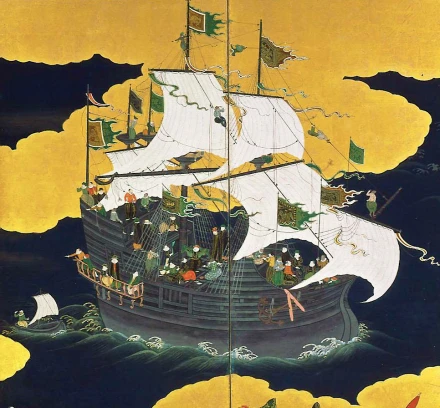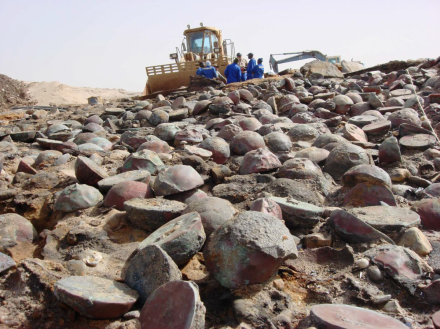History
In AD 1533, the Portuguese trade vessel Bom Jesus sunk off the coast of southern Namibia, near the modern town of Oranjemund.
Coming from Lisbon on its way to western India, it contained a multifold load of naval equipment and commodities for trade and exchange. The ship set sail from Lisbon, Portugal, 1533. Its fate was unknown until 2008, when its remains were discovered during diamond mining operations on the coast of Namibia, near Oranjemund.
Today, the Bom Jesus is the oldest known and most valuable shipwreck ever discovered off the Western coast of Sub-Saharan Africa.

Storm
It is speculated that the Bom Jesus sank when it was pulled too closely to shore in a storm off the coast of Namibia, causing the ship's hull to collide with a rock and lean over, capsizing the vessel. This hypothesis is supported by the fact that the coin chest from the captain's quarters was found at the bottom of the ocean off the coast, likely due to the chest falling out after the hull was breached by the initial collision.[3] As the Bom Jesus moved towards shore, the superstructure and hull likely broke apart and scattered the ship and its contents along the coastline, and these were later accidentally scattered further during construction of large sand retaining walls around the site.[3] The condition that the ship was found in suggest that the storm that caused the shipwreck was especially violent, although an absence of human remains (besides a few scattered bone fragments) in the site suggest that most of the crew on board survived the wreck or died at sea.[3]
Cargo
Among the over 40 tons of cargo retrieved from the excavation site, thousands of different artifacts were recovered and cataloged, including cannons, firearms, swords, lead, tin, textiles, and astronomical devices.
Copper ingots
However, the most bountiful discoveries of the shipwreck were the collection of 1,845 copper ingots weighing approximately 16-17 tons. The ingots were marked with the trademark of the Fugger company from the Freie
Reichsstadt of Augsburg, Germany. The copper coming from middle European mines.

Copper ingots on the site of the Bom Jesus
over 2,000 gold and silver coins from multiple contemporary maritime powers, and 105 different elephant tusks weighing close to 2 tons.
The discovery was unusual in that all of the ship's contents were able to be recovered and cataloged without interference from scavengers due to the highly secure nature of De Beers mining operations in the area.
Description
Status
And in this case the ship belonged to the King of Portugal, making it a ship of state – with the ship and its entire contents belonging to Portugal. The Portuguese government, however, very generously waived that right, allowing Namibia to keep the lot.”
Now, more than 15 years since the historic find was made, the Bom Jesus remains the oldest and most valuable shipwreck ever discovered in Sub-Saharan Africa.
References
- Andreas Hauptmann, Gabi Schneider and Christoph Bartels (2016).
The Shipwreck of "Bom Jesus", AD 1533: Fugger Copper in Namibia.
Journal of African Archaeology, vol. 14.
pp 181-207. - museum-in-oranjemund-tells-story-of-the-bom-jesus.
- arkeonews.net.